Weber Smokefire - Initial Review
If you've been following the release of the Smokefire, I'm sure you've seen the abundance of social media posts with concerns and complaints about it. I wanted to wait to post my thoughts on the product until I had a little more experience with it, but given the amount of attention it's receiving, I've decided to share my review now in the hopes it provides more context around a single user's experience compared to some of the vague posts online.
I'm going to break down my thoughts into the following sections.
- Assembly
- Weber Connect Setup
- Initial Burn-in
- First Cook - Frozen Burger Patties
- Second Cook - Pork Ribs
- Third Cook - Brisket
- Weber Pellets
- Pros
- Cons
- Opinion
Also, I'd like to make the disclaimer that this is the first pellet cooker I've ever owned. I'm coming from a custom built UDS, which is a much different beast. Take my opinions for what they're worth.
Assembly
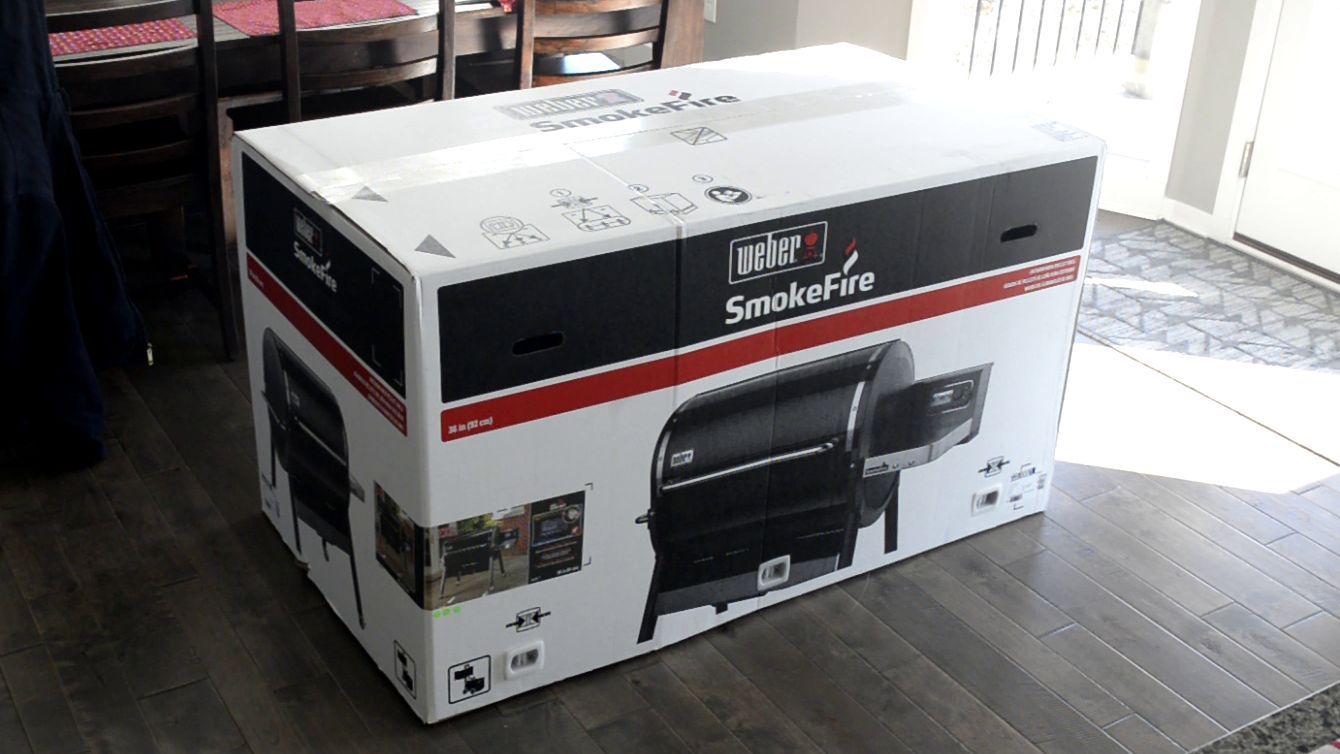
I utilized the BILT app on Android to guide me through installation, and my experience was great. The ability to interact with a 3d model and interactive parts diagrams made the entire process painless. I did experience one issue during the installation of the burn pot grate. The "tabs" on the grate would not fit into the slots they were designed to go in. I had to take a pair of pliers and very slightly bend one of the tabs inward for it to fit. Overall, that was only a minor hiccup and was thankfully a quick fix.
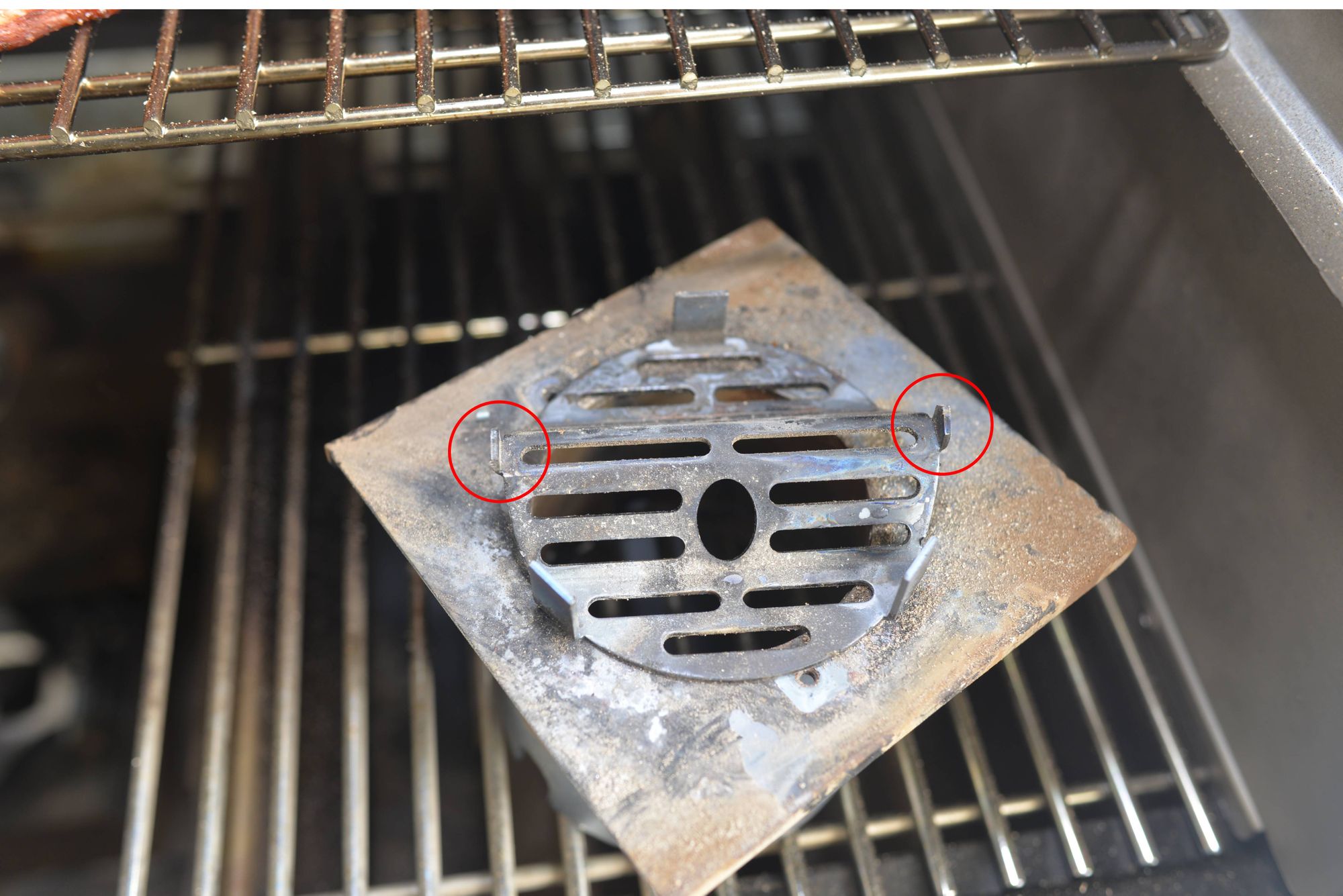
The door from my home to the deck is only 32" wide; however the smoker fit through with less than an inch to spare and saved me from having to assemble it in the cold.
I did a visual inspection of the grill after assembly and noted two things that stood out.
The caulking in the pellet hopper was cracking in one area. I plan to touch this up with a bead of food grade safe caulk, but didn't have any on hand. I don't fully know the purpose of the caulking here other than to keep moisture out of the hopper.
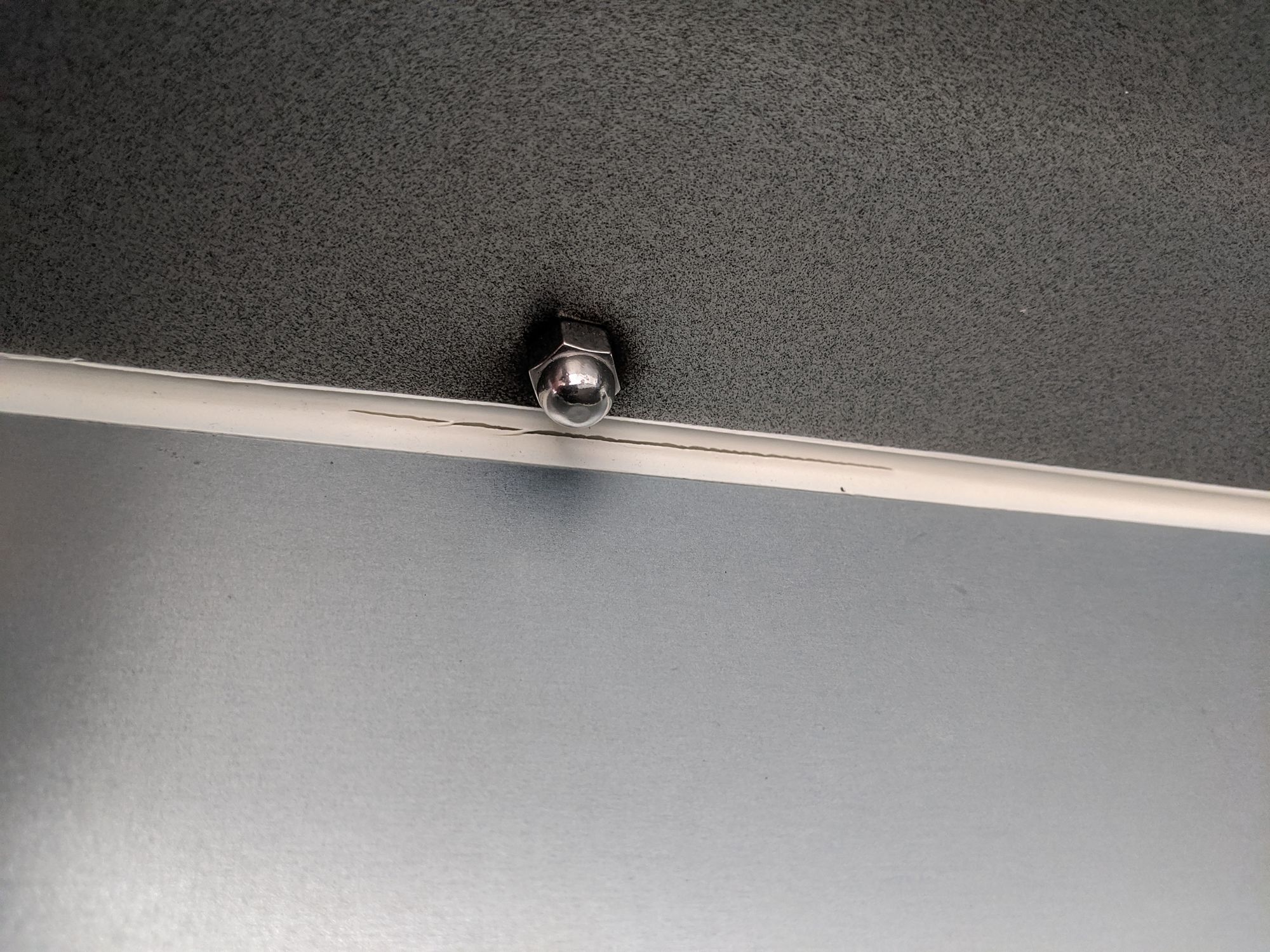
Another item of note is the fitment of the grates. There is a substantial amount of space (about 1-1/8") the grates do not occupy. It seems I'm not the only one to notice this and Weber support indicated their reference model has the same gap. My Weber Genesis does not have this much extra space and the CSR could not explain why the Smokefire was designed this way.
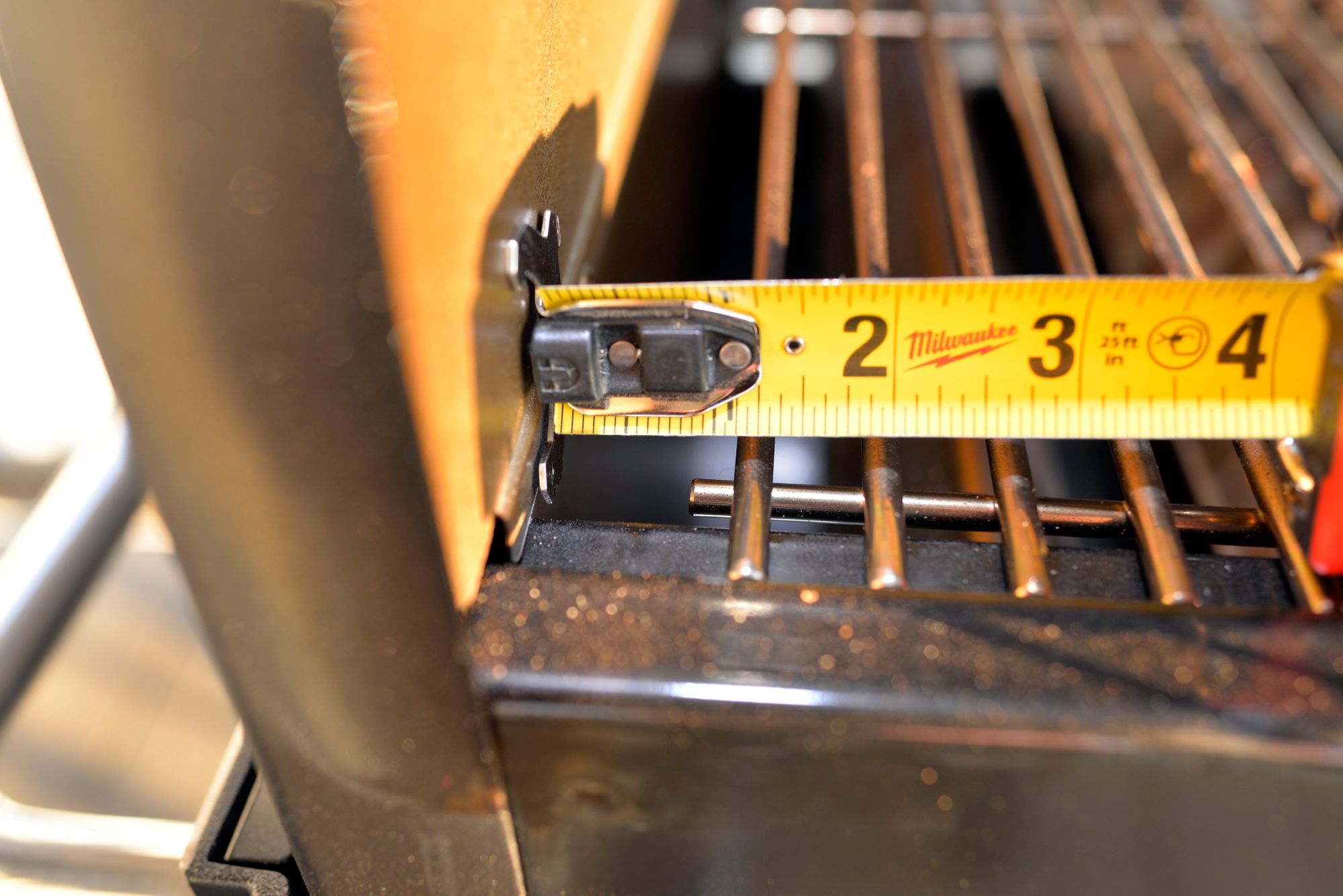
I've read about two additional issues people were having that I personally did not experience.
Step 25 of the assembly has you install the fire pot. The orientation of the burn pot is specific and requires that you align the two round dots next to one another; however, the instruction manual included with the grill does not note this. The BILT app and the assembly manual online both include this information, but I can see how it was missed by some.
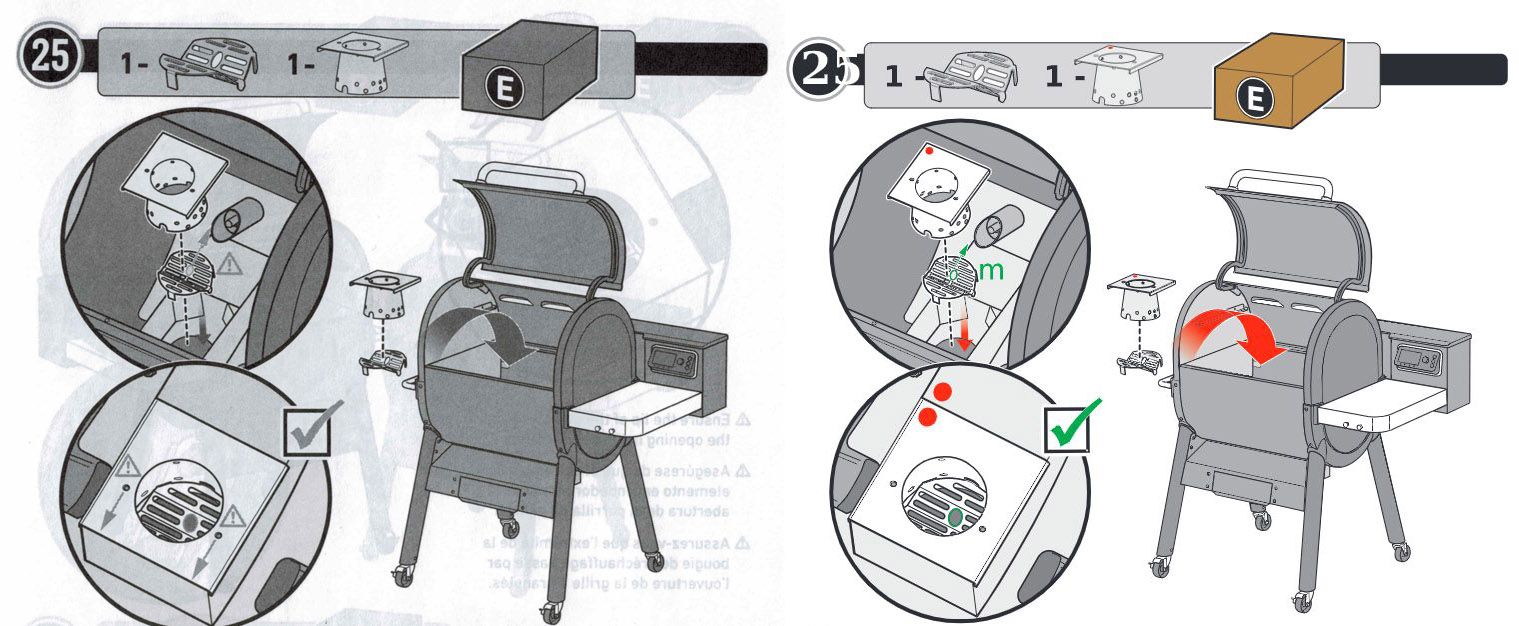
Step 31 of the assembly has you install the flavorizer bar brackets. They fit on two supports directly below the "shelf" that supports the grates. I didn't personally see this step as confusing, but I've seen numerous people attempt to install the brackets onto the "shelf" for the grates.
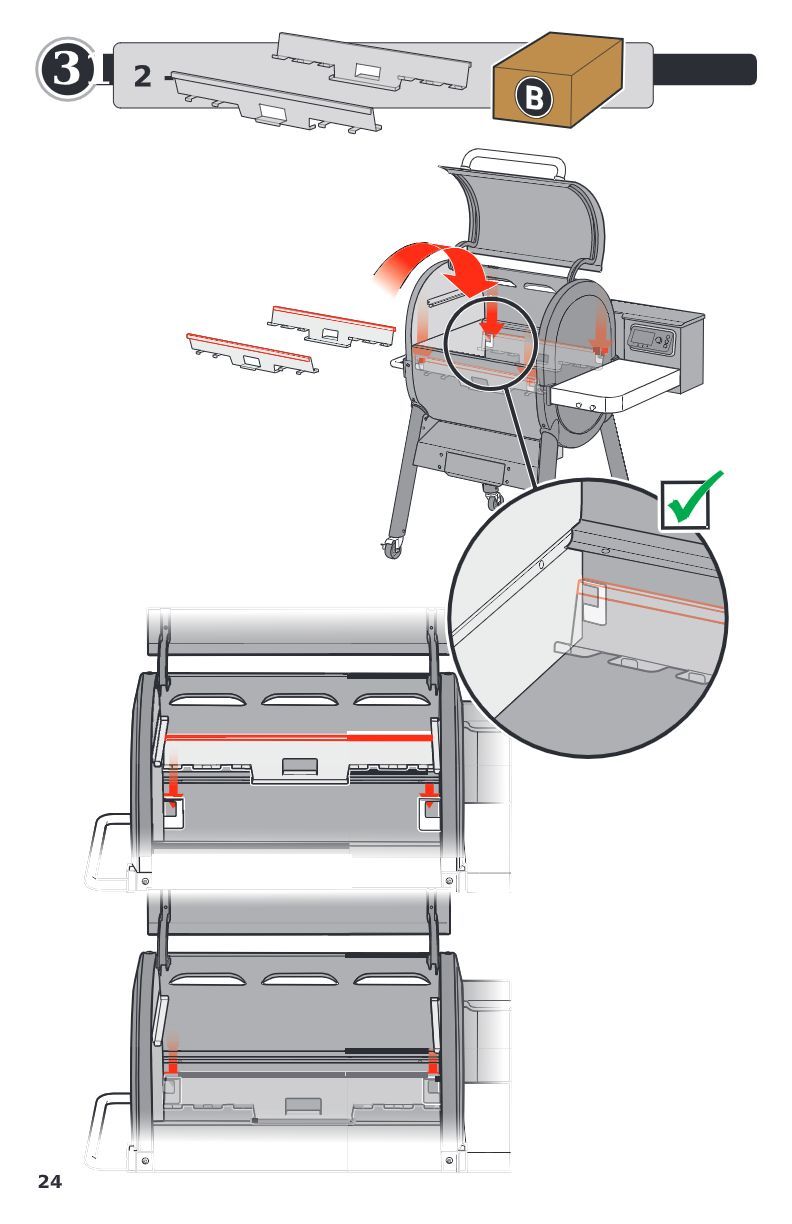
Weber Connect Setup
Immediately after assembling the grill, I plugged it in and began to configure the Weber Connect app. I had read from other owners that there was already new firmware and that it should be taken before starting the burn-in.
The Weber Connect app automatically detected the grill and added it. The app automatically began the firmware update, which took about 10 minutes. Upon completion I was prompted to power cycle the grill. I did not experience any issues during this process.
After restarting the grill, I connected it to my wifi via the app. Unfortunately, the app would not scan for available SSIDs, you are required to manually enter your SSID and password.
At the time of this writing, there isn't much the app is capable of. Unless you're doing a "Cook Program", you essentially get 5 features.
- Live temperature readings
- Push notifications for warnings (Low pellets, glow plug replacement, etc)
- Push notifications for target temperatures
- Push notifications for timers
- Firmware updates
Initial Burn-in
The manual states that the first time you operate the grill, you should season it by running the grill on the high temperature setting (600 degrees) for 30 to 40 minutes.
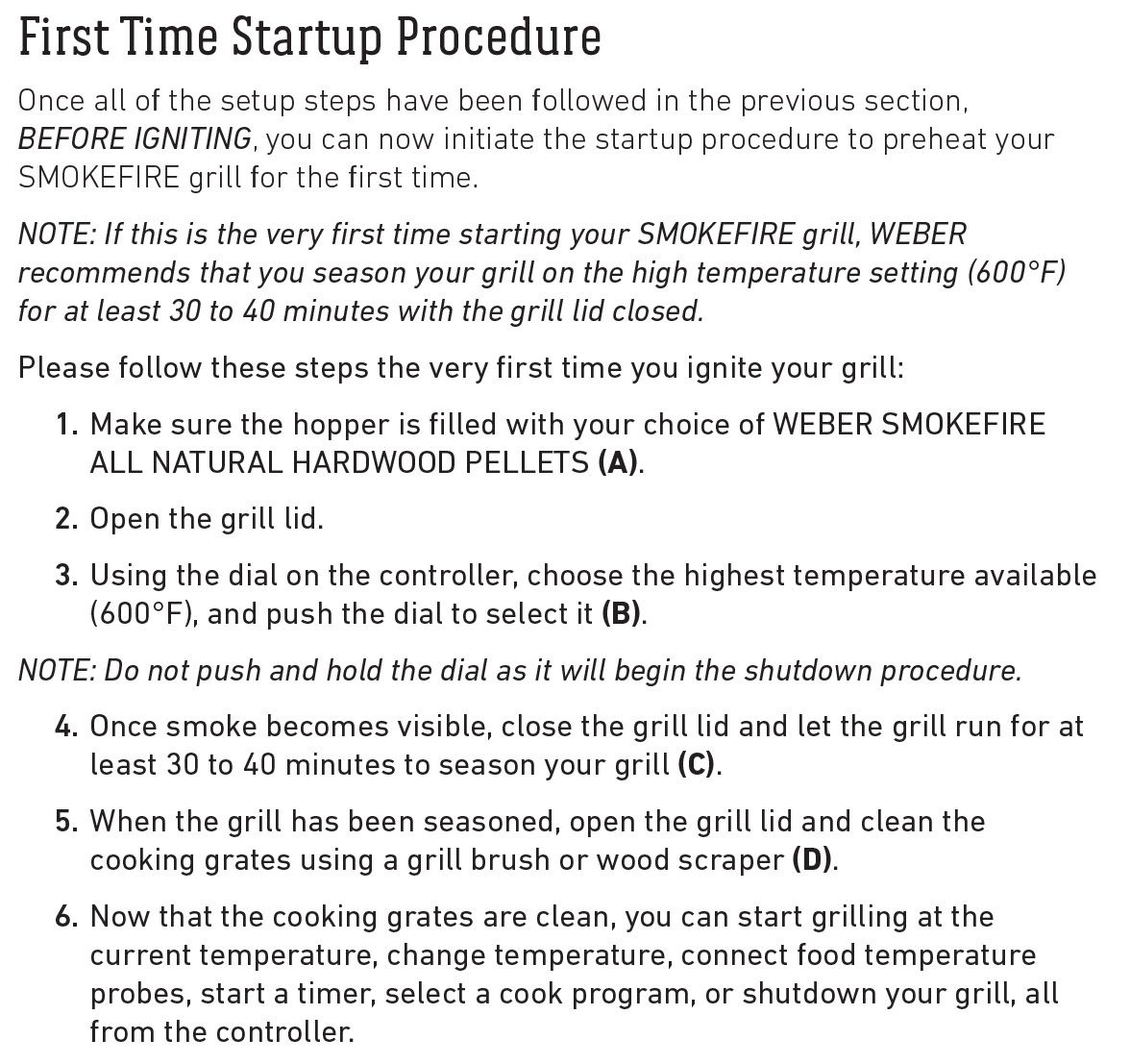
It was about 17 degrees out when I started the burn-in process and it took the grill about 40 minutes to reach 600 degrees. I opened the lid to investigate the size and location of the flame and noticed all of the flames were exiting on the right side. After closing the lid, the grill was not able to get back to 600 degrees in the next 20 minutes; it seemed to get stuck around 575 degrees. I'm hoping this is attributed to the low ambient temperature. I burned a total of 7.6lbs of Weber Grillmaster Blend pellets during this process.
Because the fan was blowing at full speed during this process, the majority of the ash was circulating inside the grill and was not landing in the ash tray. This seems unavoidable and isn't of much concern to me.
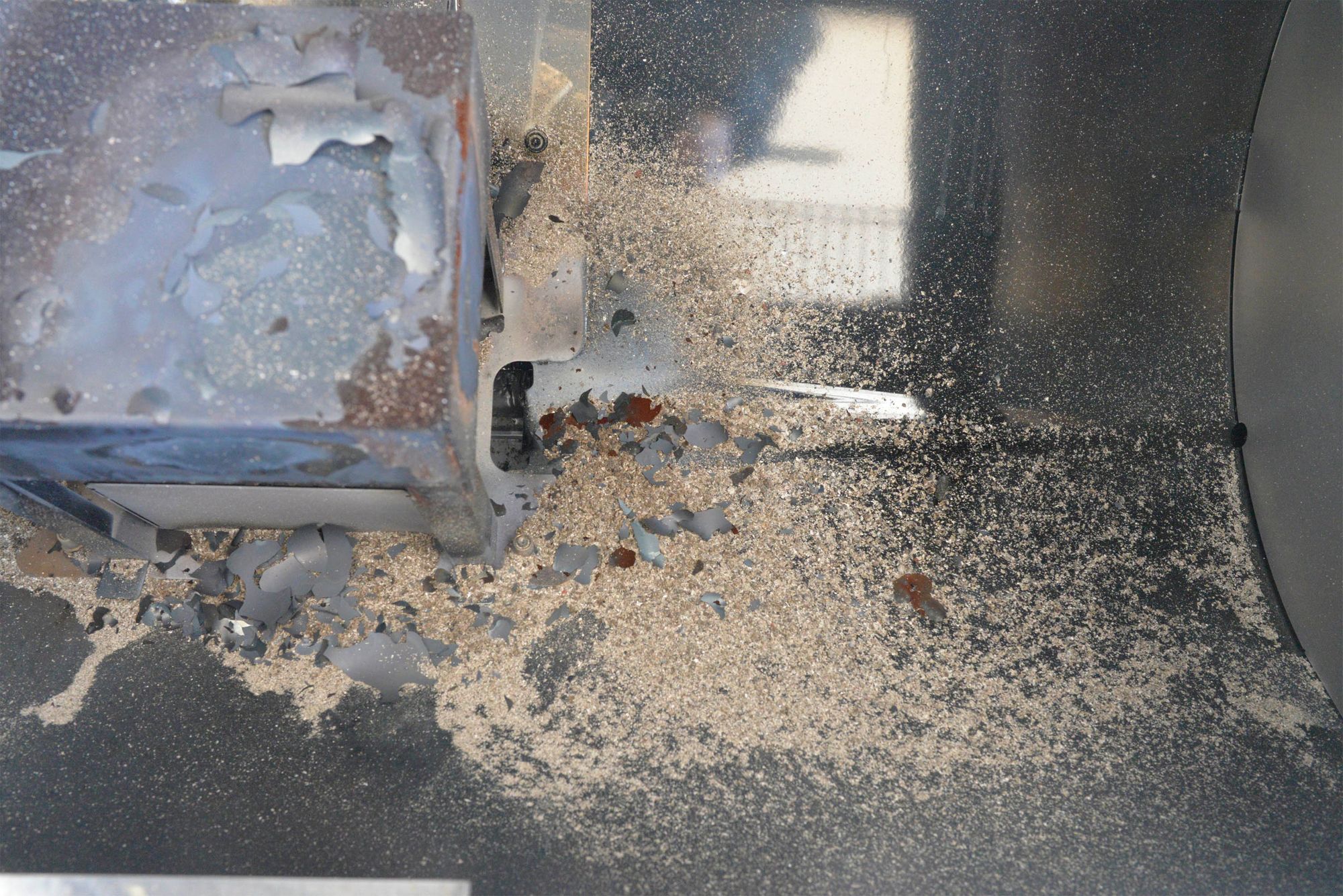
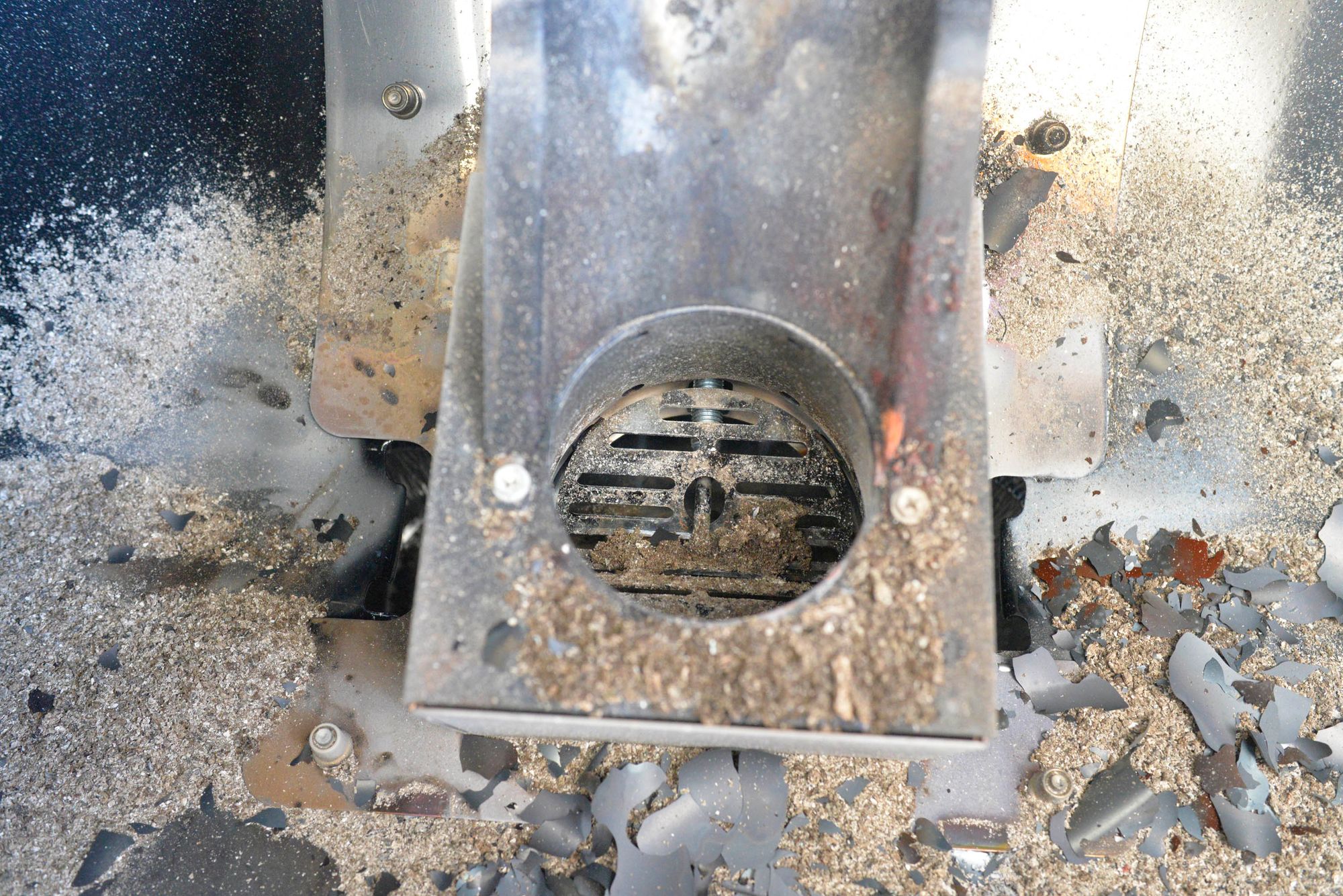
After the burn-in, I wanted to test the pellet cleanout and weigh the remaining pellets to get a rough idea of pellet usage for the max temperature setting. During cleanout, the pellets continually got stuck and required me to agitate them until they fully emptied. Far from a deal breaker, but definitely annoying.
First Cook - Frozen Burger Patties
After getting the smoker assembled and burned in, I didn't have much time to do a long smoke. I found some hamburger patties in the freezer and decided to do a cheap, quick cook to get a feel for things.
I smoked the patties at 200 degrees for 20 minutes to allow them to soak up some smoke and then cranked the temp up to 400 degrees to finish them off.
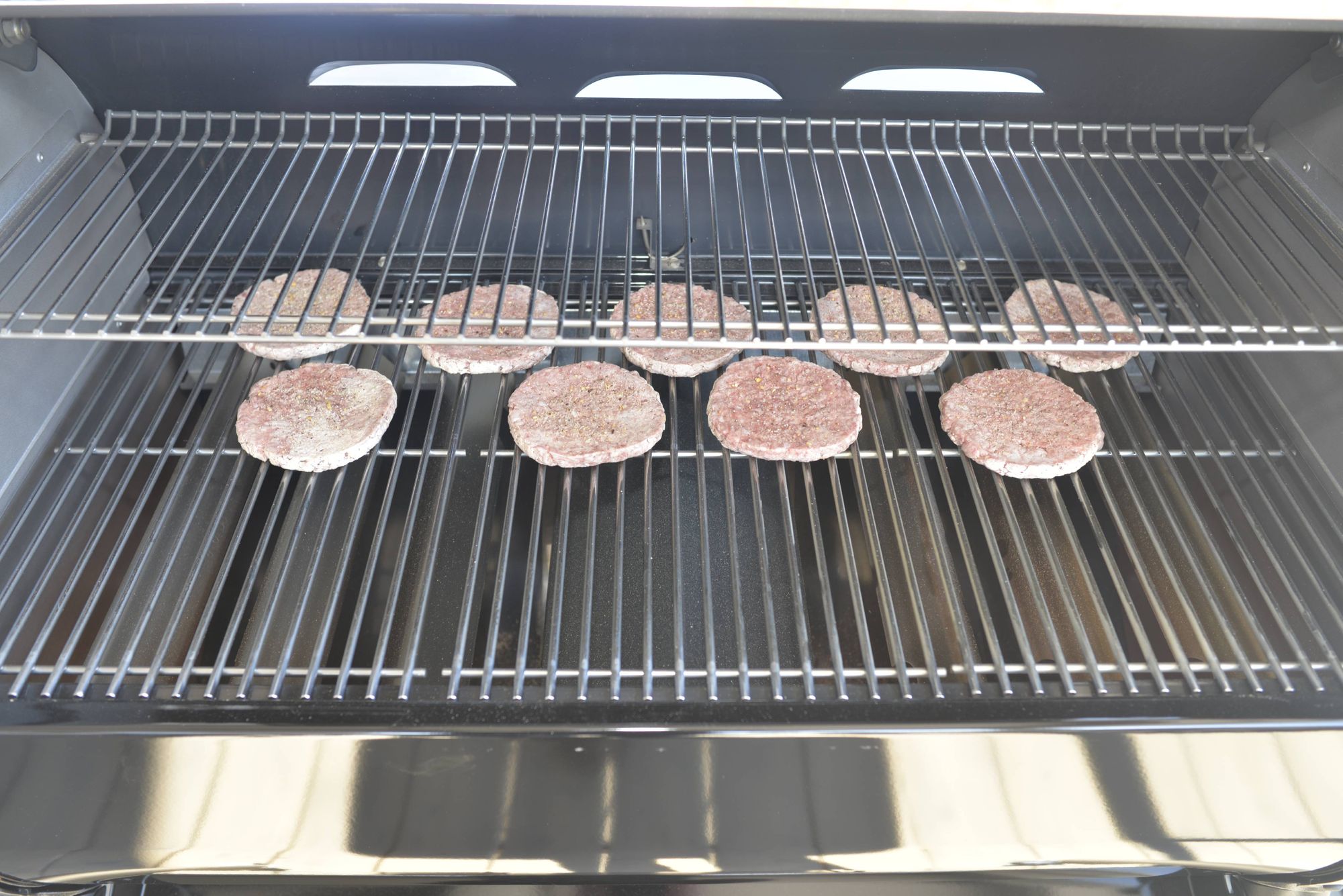
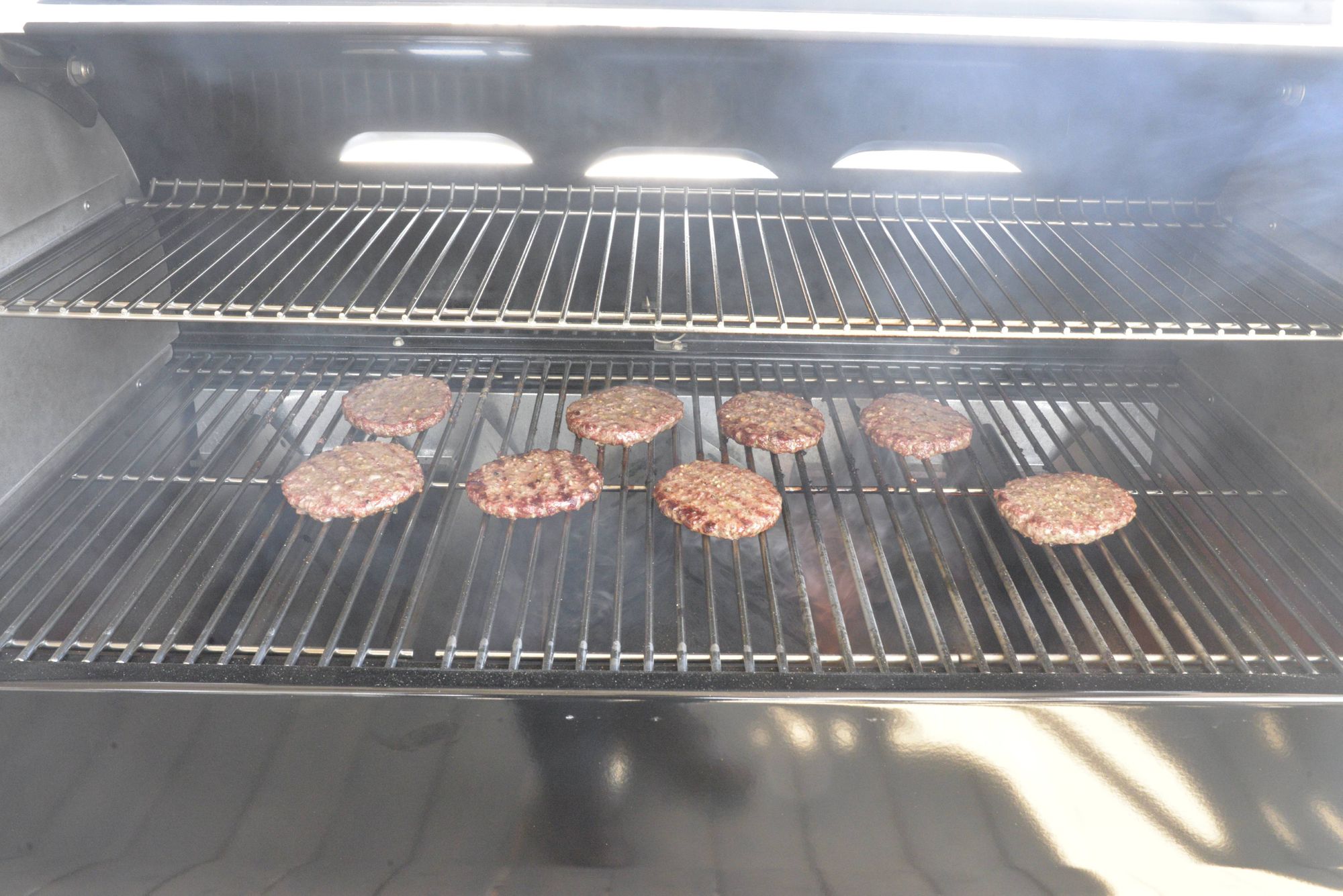
So, to be honest, I didn't expect much from some random burgers I found in the freezer. I'm used to burgers cooked on my Weber propane grill and I was pleasantly surprised with how much flavor these burgers had. The grill put a good amount of smoke into them and had no issues charring them up at 400 degrees.
There was some obvious variance in temperature across the grates, though I imagine as I get used to cooking with this grill, I'll learn how and when to rotate the food. (To be honest, I have to do this to some degree on my propane grill)
Second Cook - Pork Ribs
I bought a pair of St Louis ribs for my second cook. Due to the current limitations of the Weber Connect app, I decided to throw an ambient temp probe hooked up to my open source HeaterMeter. This would allow me to view the temp over time on a graph and get a feel for how well the Smokefire could hold temps. I also used the "probe channel" on the top-right of the lid to feed my probe into the smoker. It worked really well, was easy to use, and I actually like it better than the probe ports on other smokers.
At this point, I had already seen some complaints of the pellets getting stuck in the hopper. What I didn't see is anyone actually wait for the smoker to fail feeding pellets, they always pushed them down prior to it failing. I wanted to give the hopper the benefit of the doubt, so I didn't touch the pellets. At this point, I had emptied the pellets after the burn-in to weigh them, and put them back in the hopper to do the burgers. I didn't touch them prior to starting the ribs.
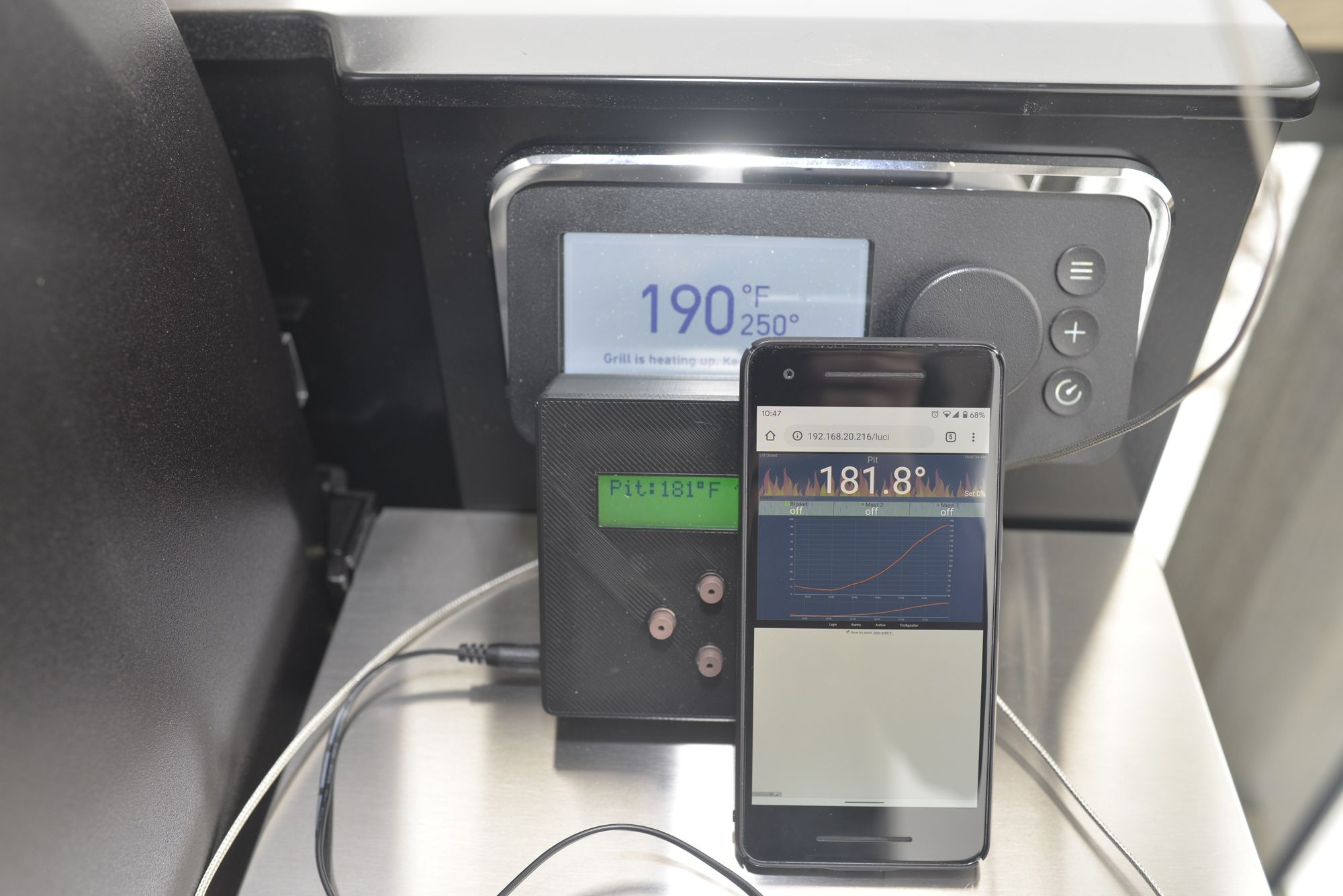
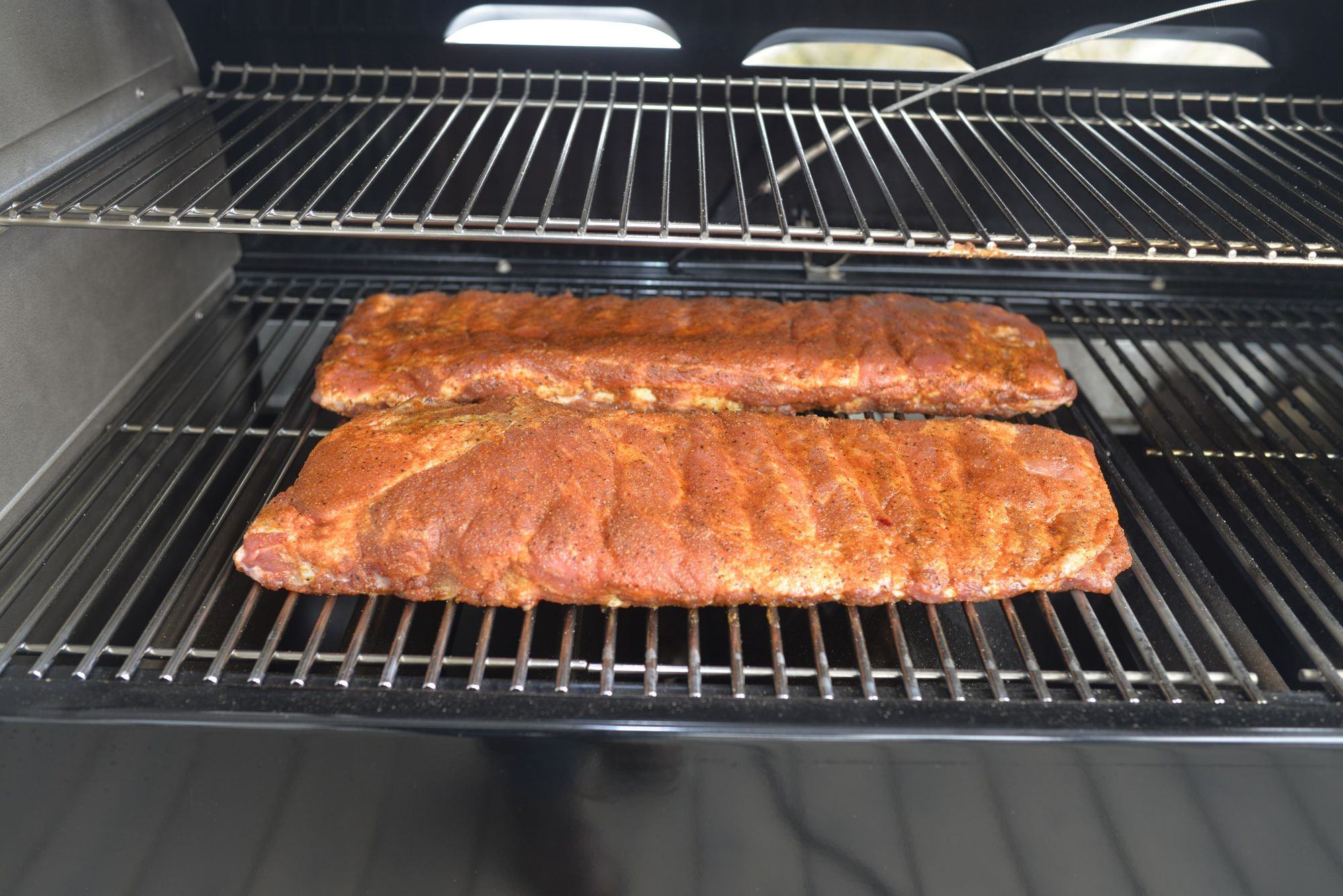
I left the grill to do its thing and was periodically opening the Weber Connect app to check on temp. Unfortunately, about 2 hours into the cook, the temperatures started to plummet and I had left home to pick some items up from the store.
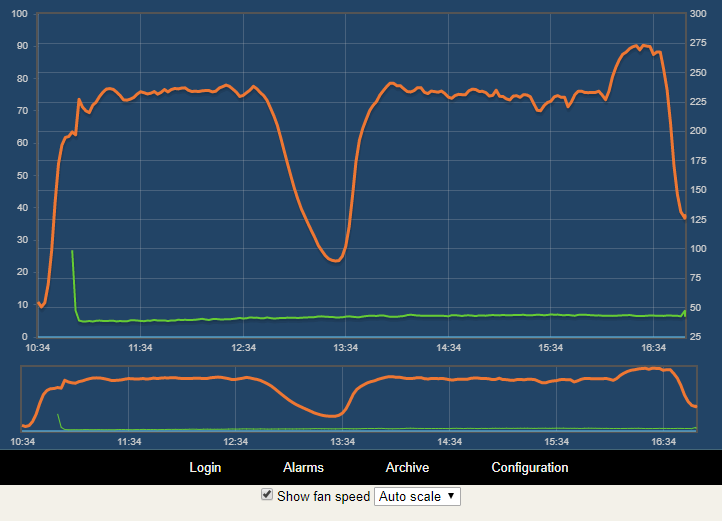
Once I got home, I identified the problem.
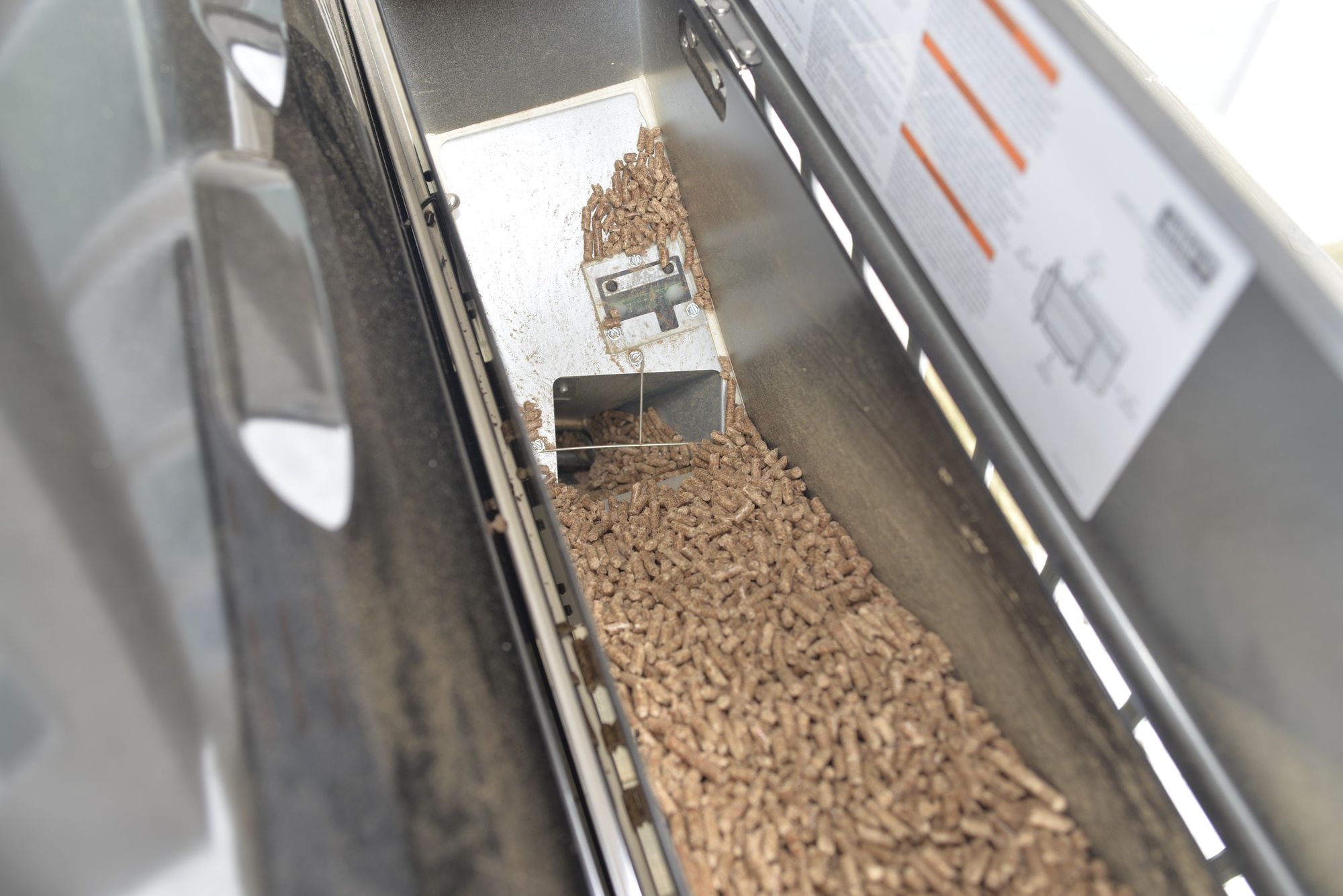
So, the pellets didn't stop 100%, but they were falling so slowly and gradually that the smoker burned itself out. It continued to run without any fire, and the pellets piled up in the burn pot. I had to pull the ribs, grates and flavorizer bars out of the smoker so I could access below. I then removed the diffuser weldment and pulled the pellet slide, burn pot and burn pot grate out. This allowed me to completely clean up any excess pellets. While I was in there, I scraped all the grease and ash out.
The smoker required me to run through the 15 minute shutdown procedure before I could start it back up. If anyone knows how to skip this, please let me know.
What I don't yet understand, is why the Weber Connect app didn't warn me that I was either low on pellets or that my temperature was continually plummeting. I've asked Weber to clarify exactly how the pellet sensor detects when you're low on pellets as well as why I wasn't notified of a loss in temperature. They're supposed to follow up later this week.
Once I got the smoker fired back up, I got the ribs back on and eventually some baked beans and potatoes.
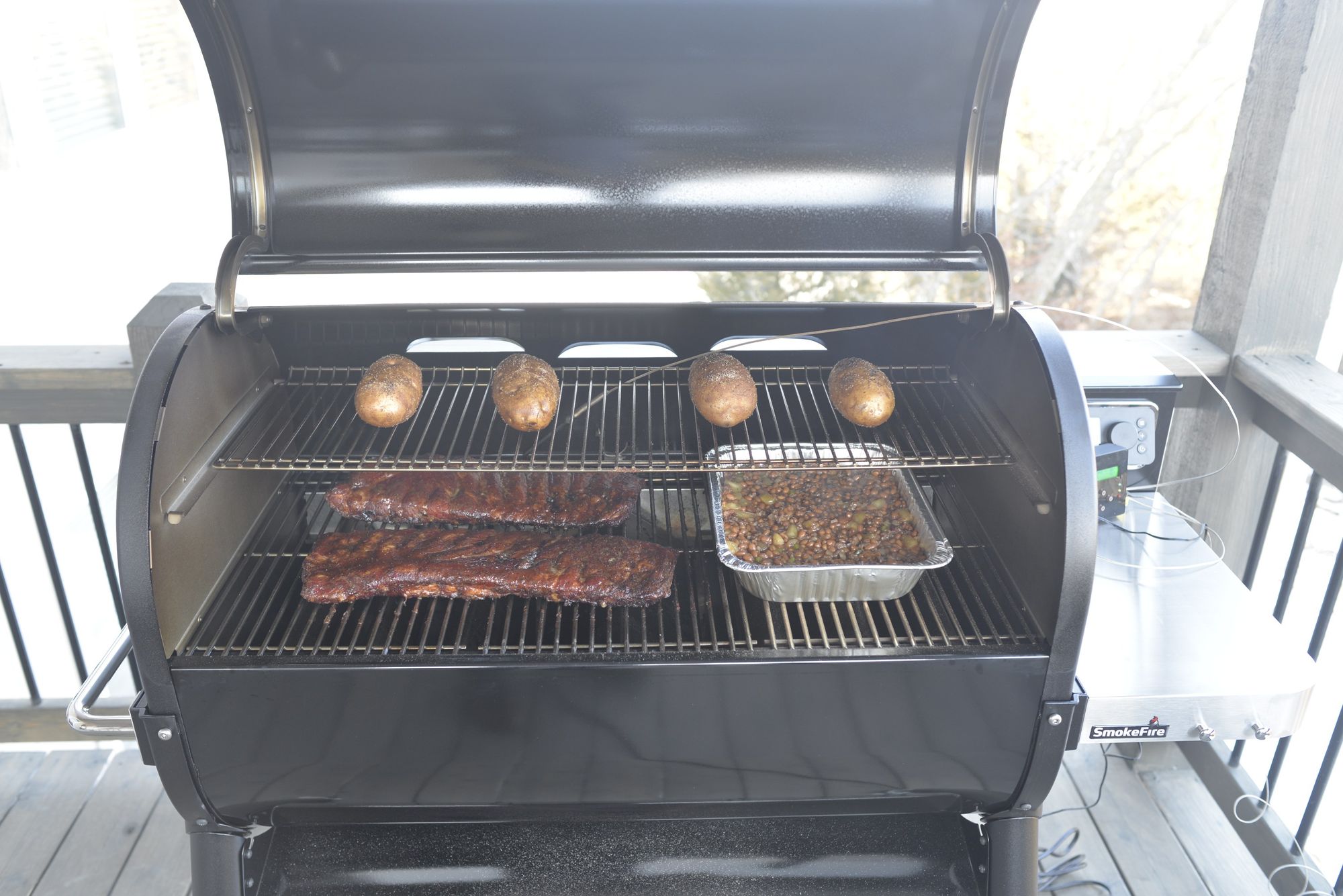
I was already set back over an hour, so at this point I monitored and pushed the pellets towards the auger periodically to prevent another incident. Because of the lost time I ramped up the temp to 300 degrees towards the end of the cook in an attempt to get everything finished up.
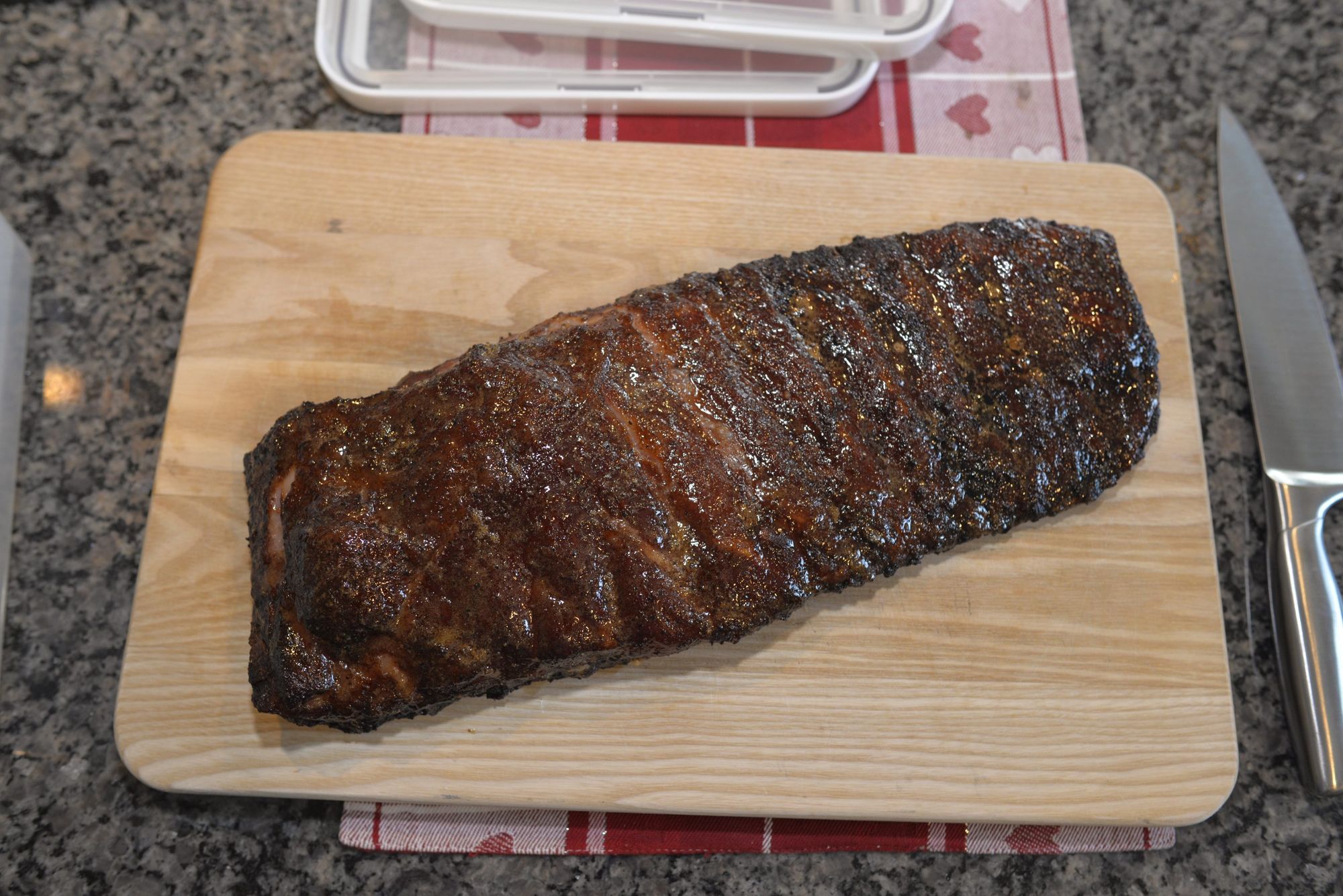
Despite the issues with the smoker, I was fairly happy with the end result. The ribs seemed to have a crunchier bark closer to the middle of the smoker. Next time I'd try running at a little lower temp or potentially put the ribs on the top rack. Placing a water pan below the ribs may be an option as well.
Third Cook - Brisket
Next up was a 19lb whole brisket from a local butcher shop.
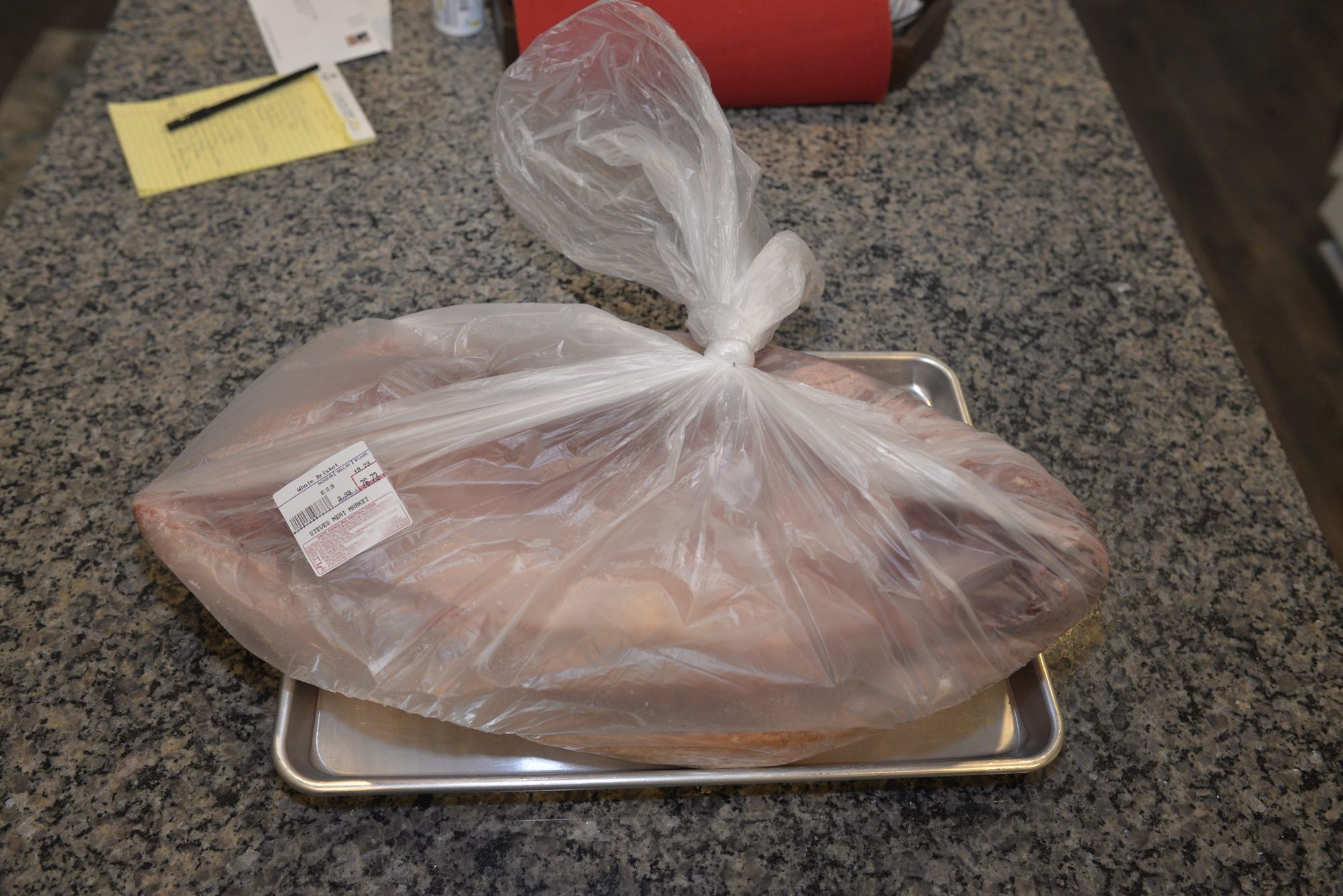
Due to the size, I decided to split the point and the flat.
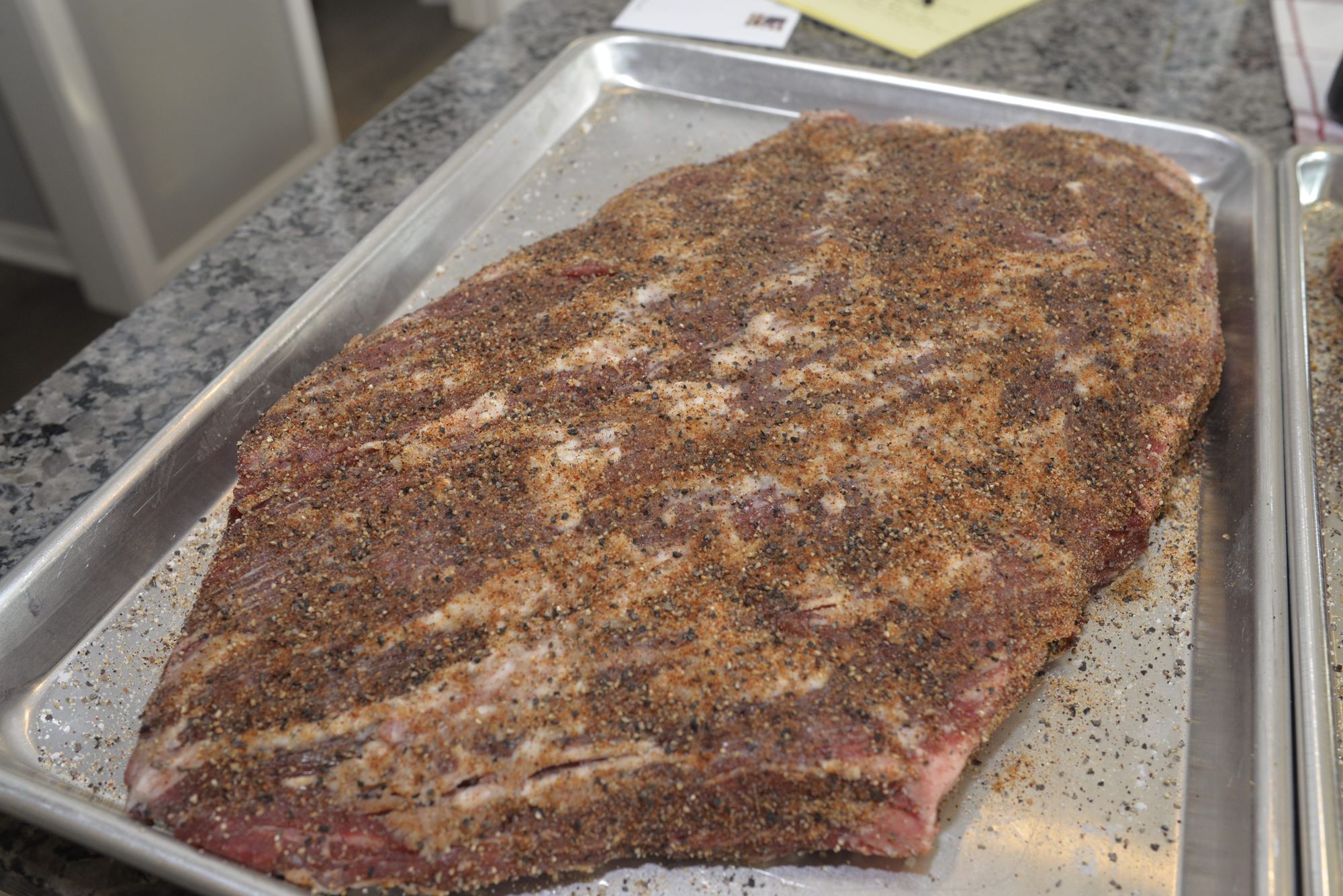

Despite starting at 19.2lbs, I only had 10.2lbs of meat left after trimming. Yes, this thing had 9lbs of fat on it. I've never lost that much weight from trimming before. The final weight, coupled with the fact that I split it, meant I was only looking at around 7 hours or so for this cook.
I started things off at 250 degrees. After a little over 4 hours, I pulled and wrapped the brisket. I put it back on the smoker at 300 degrees. About 30-45 minutes later when I went to check on the pellets, she had flat-lined.
Once again, I shut it down (didn't have to wait 15 minutes for the shutdown procedure this time), pulled everything out of the smoker and cleaned it all out. There were no pellets left in the burn pot this time, anything that was there, was burned out. Because the controller locked up, the entire smoker just stopped where it was.
Again, I didn't receive any warning via the app. What this tells me is, the computer for the wifi connectivity and the computer to control the smoker are one and the same. If the controller locks up, there isn't any failsafe or "watchdog" style system to restart or recover automatically. I can't claim any other smoker is any different, but until they can stabilize everything, I may be running my Heatermeter during my cooks as my own backup.
After starting the smoker back up, I was able to get it started and set to 300 degrees to finish the job.
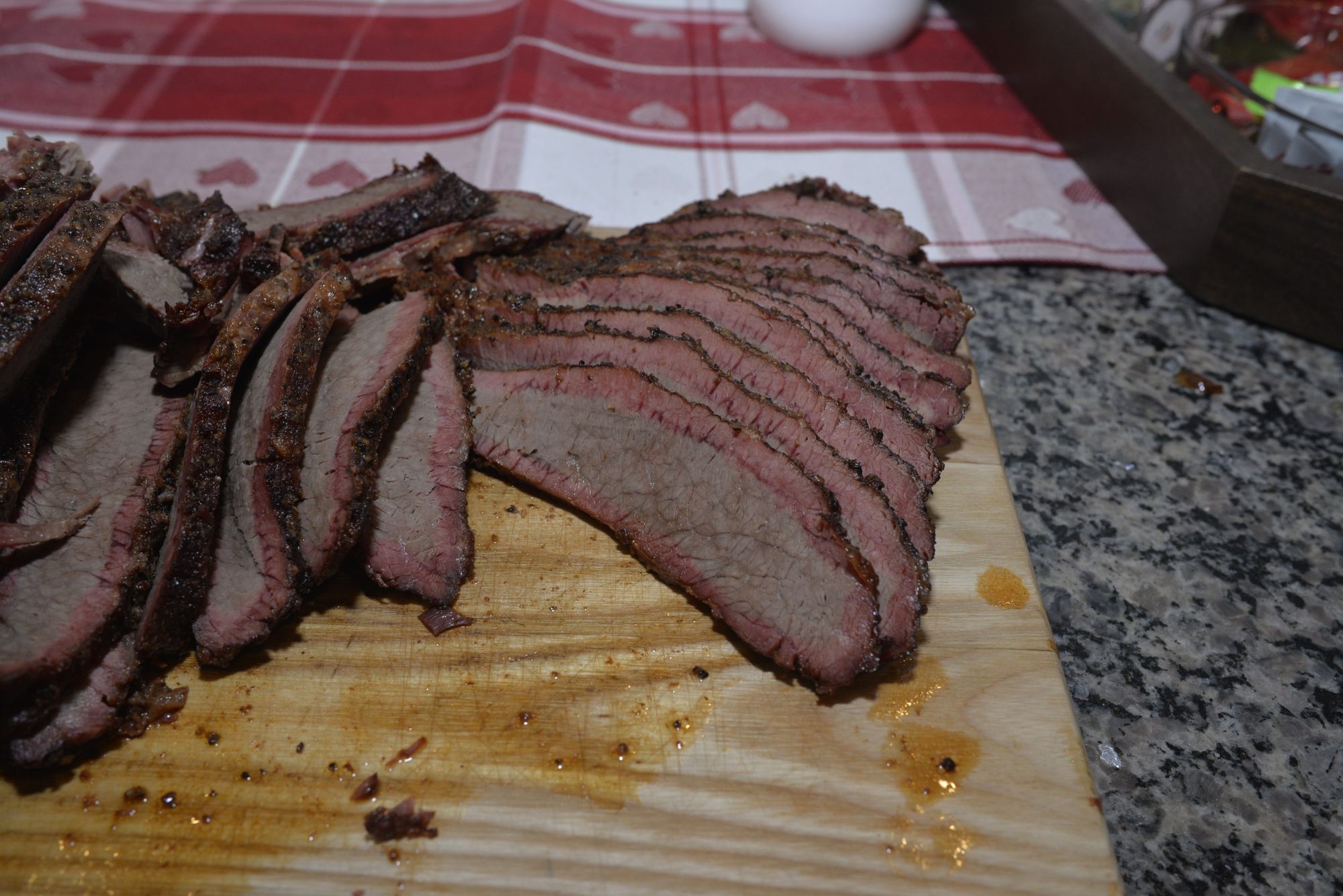
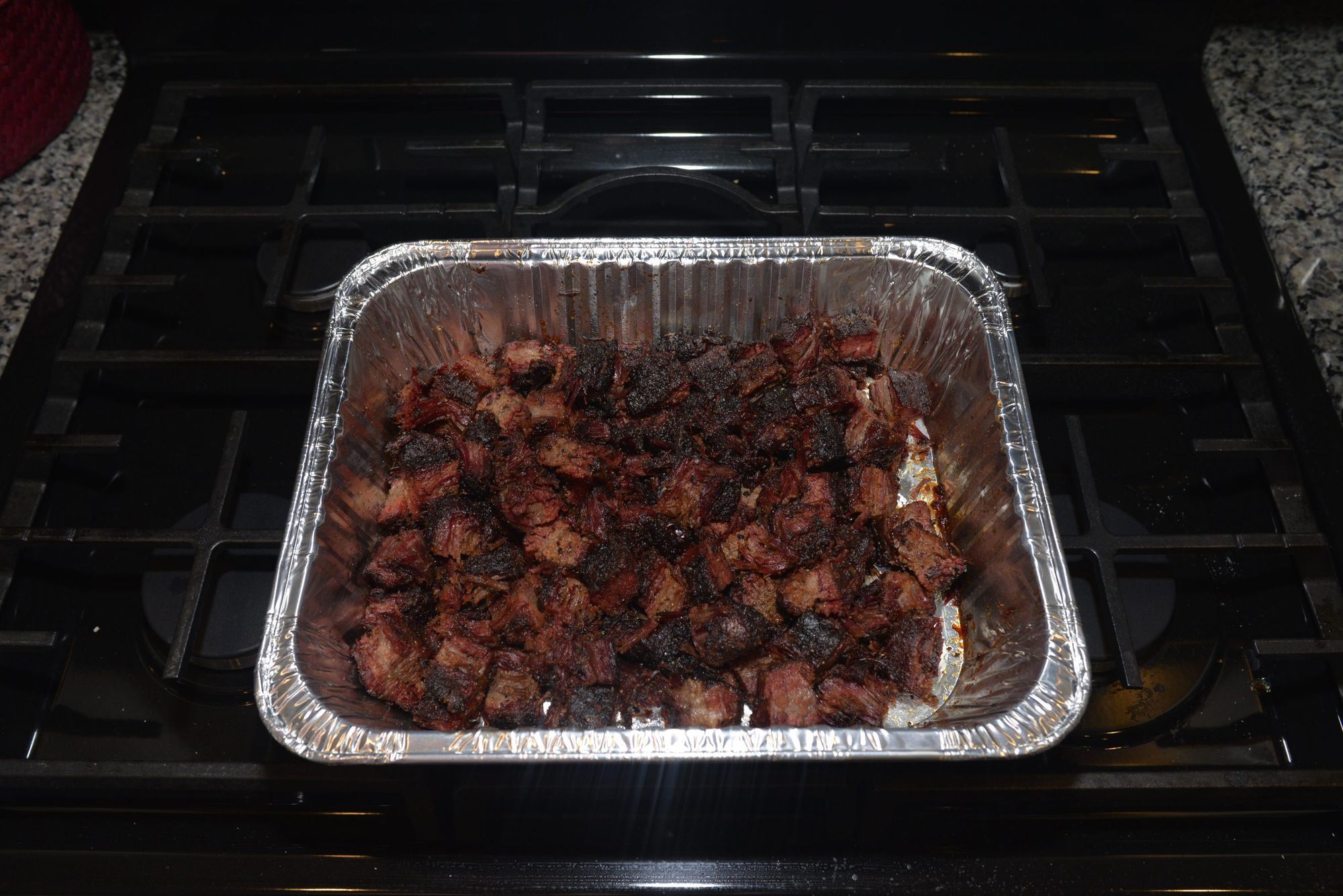
The brisket was very tender and if anything, over done. I was happy with the amount of bark and the overall flavor.
An interesting note during this cook was that the pellets were starting to get caught in a similar fashion to my previous cook but this time I received a low pellet warning. Hopefully this type of warning is something they can make more reliable via software updates.
Weber Pellets
Weber sent me a 20lb bag of their GrillMaster Blend pellets for pre-ordering the grill. I also happened to have already purchased a bag of Lumberjack Competition Blend pellets. Both of these pellets are a 33/33/33 blend of Maple, Hickory, and Cherry. The Weber pellets retail for $17 while I paid $10 for the Lumberjack pellets. I've used the entire bag of Weber pellets and am about halfway through the Lumberjack pellets. I personally could not identify any visual difference between the pellets, and when burning they smell the same as well.
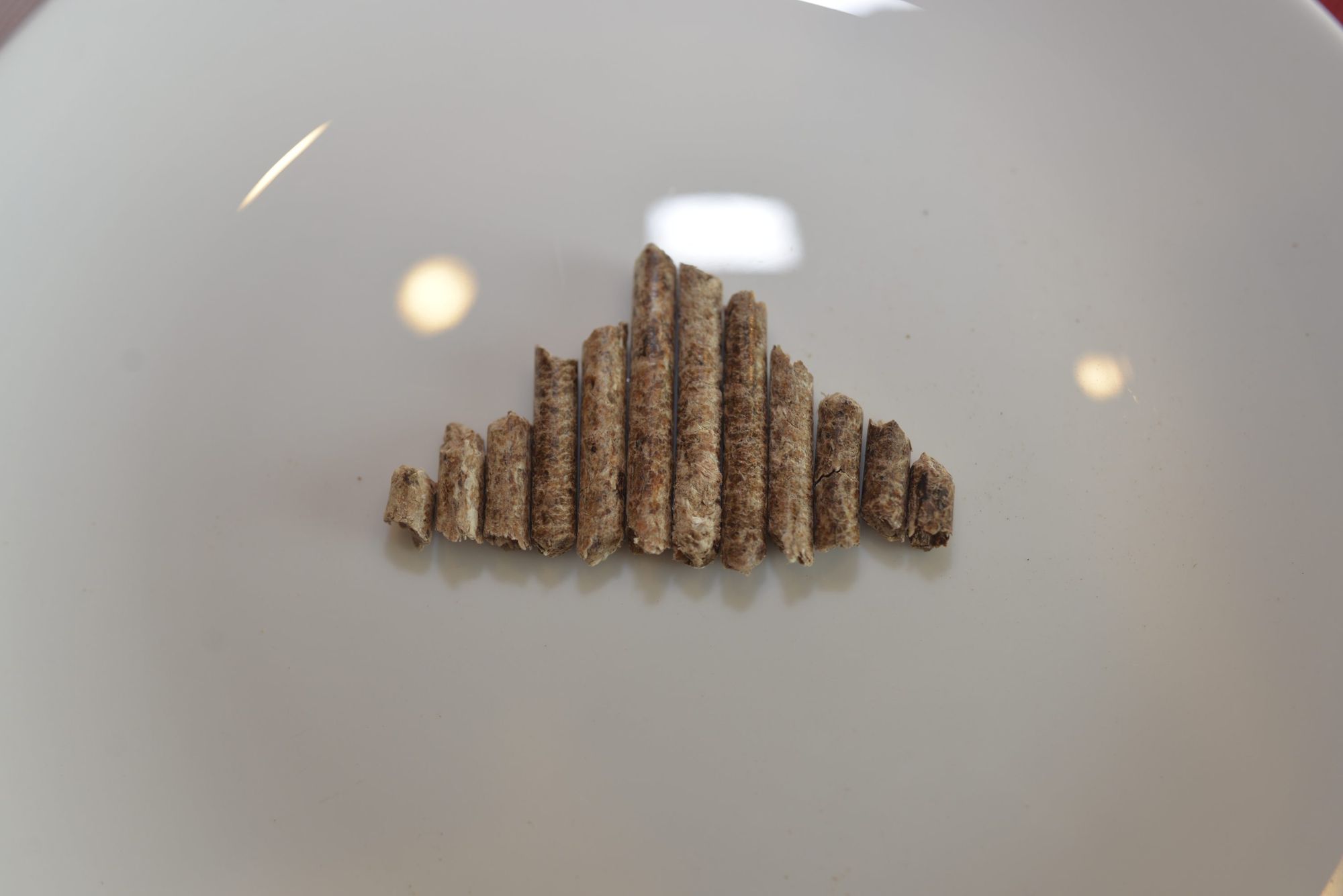
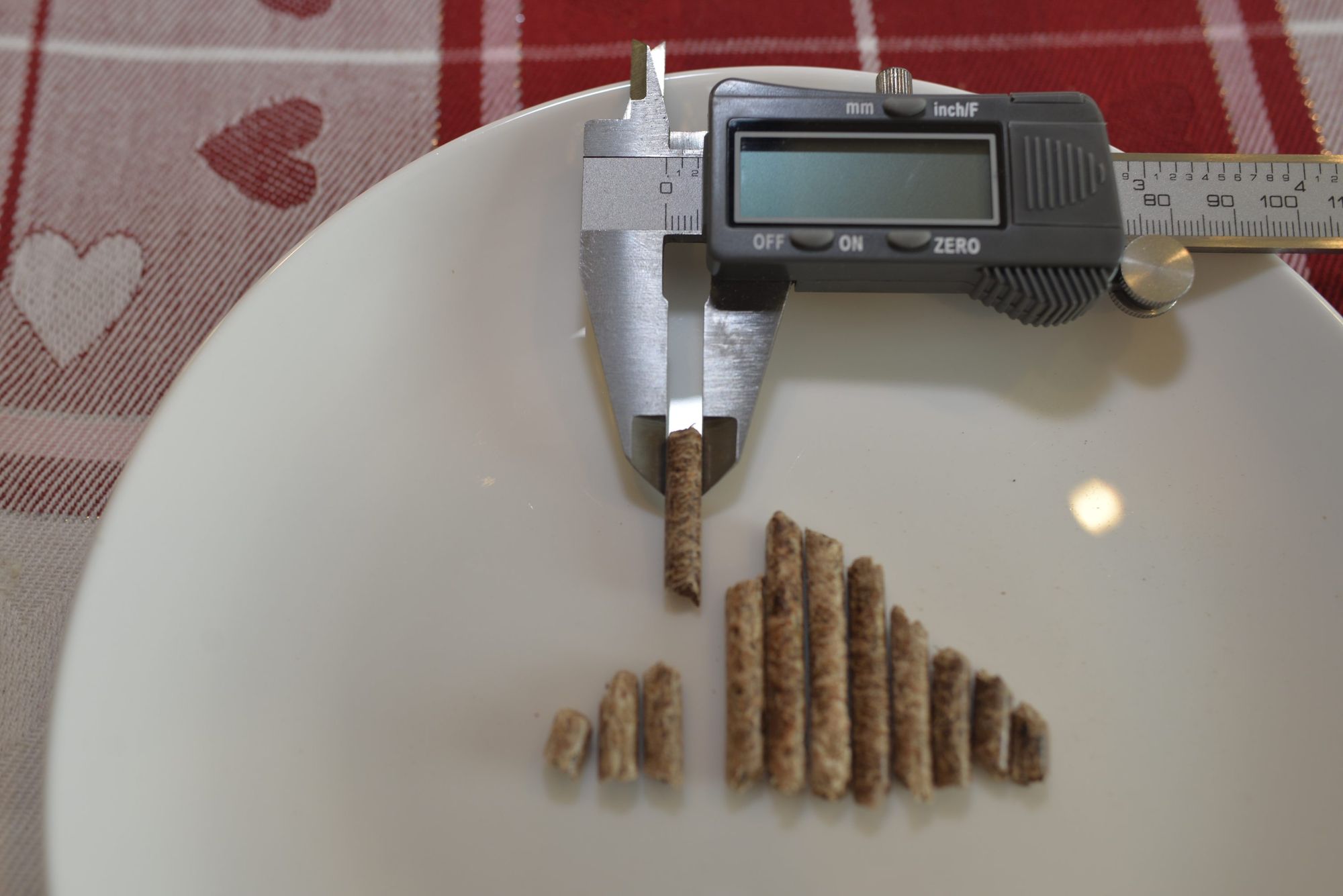
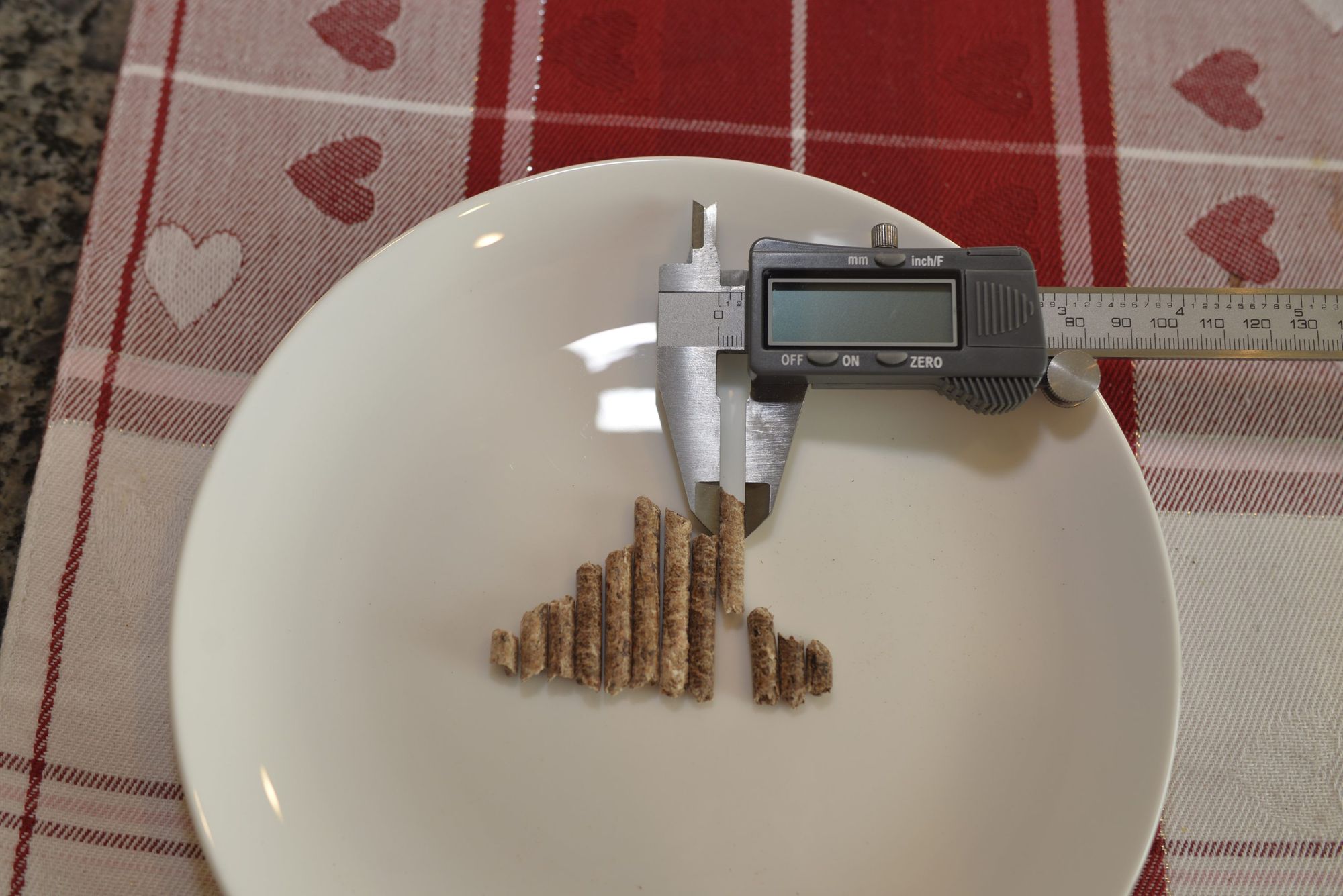
Obviously this doesn't mean they're the same pellets, but I don't see myself spending almost 2x as much on the Weber branded pellets if I can't detect any difference. In the above photos, the Weber pellets are on the left, the Lumberjack pellets are on the right.
Pros
In no particular order:
- Price per sq/in is great
- $0.81/sqin - Camp Chef Woodwind Wifi 36
- $1.16/sqin - Grilla Grills Silverbac Alpha
- $1.19/sqin - Weber Smokefire EX6
- $1.49/sqin - Weber Smokefire EX4
- $1.68/sqin - Yoder YS640S
- $1.70/sqin - Broil King Regal Pellet 500
- $1.71/sqin - Rec-Tec RT700
- $1.85/sqin - Traeger Ironwood 650
- Porcelain enabled finish is durable and looks good
- Overall build quality is above average (mostly)
- Hopper holds a full bag of pellets when 2lbs remain
- 600 Degree max temp for searing is attainable
- 4 Food Probe Ports
- Hopper cleanout exists
- Pellet sensor exists
- Dual walled sides
- Casters
- I know some people aren't happy with them, but they are better than what's on my Weber propane grill, and I've had no problems rolling the smoker around on my deck. If you want to offroad this thing, you'll need something beefier.
- Cover
- Same quality as my Weber Genesis cover (that's a good thing)
- My propane grill cover has lasted years without issue
- Stays pliable in the cold weather vs others that get hard and rigid and crack
- Has space for the future side shelf extension
- Straight-forward assembly which teaches you how to install the glow plug
- Probe channel in lid works well and is easier to use than the ports on others
- Stainless steel flavorizer bars do their job to create smoke and flavor
- For all of my cooks, there was continous and abundant smoke, I don't find it lacking at all.
- Weber connect allows remote monitoring and promises to get better with time
Cons
In no particular order:
- 1-1/8" gap between grates is excessive
- Caulking in the pellet hopper was cracked
- Pellets don't slide easily and can cause burn-outs
- Pellet sensor seems inconsistent
- Reaching 600 degrees for me took a very long time
- Hopper cleanout requires some help to work
- Weber brand pellets are too expensive
- Weber connect is currently severely lacking in features and reliability
- The controller locked up within my first 3 cooks
- In my experience, close to 50% of the grease and ash never make their way to the grease and ash tray.
- Increased likelyhood of grease fires
- There are multiple reports of grease fires during cooks on a clean smoker
- Weber claims they're still trying to figure out why this is happening
- The current recommendation is to use a grease pan above the flavorizer bars and below the grates during long cooks.
- You should also NEVER set the temp above 300 degrees unless you've cleaned the smoker and confirmed there is not pooled grease in the bottom.
Opinion
Using the Weber Smokefire has been a very polarizing experience. I'm going to highlight what I believe are the most important factors for the success/failure of this grill.
- All of the food I've cooked on this grill has been fantastic. This is the one thing that's got my hopes up for the future of this grill.
- The pellet hopper and sensor must work reliably. Supposedly spraying food grade silicone in the hopper prevents the pellets from getting stuck. End users should not be responsible for solving this themselves. Weber needs to send all owners instructions/supplies for fixing this.
- The controller must be more reliable. I don't know how widespread controller issues are, but they cannot become commonplace. If this is not resolved, consumers will not be able to trust the product.
- If this grill is as prone to grease fires as it seems, then a drip pan during long smokes is not an option. Weber MUST communicate this. I personally think they should manufacture a set of reusable drip pans (similar to their aluminum grease traps) that you could line with foil and reuse. This should not be an accessory but an item sent to all owners of the grill and included in all future purchases.
More To Come
Stay tuned for more posts about the Weber Smokefire as well as other products and projects I get my hands on.
